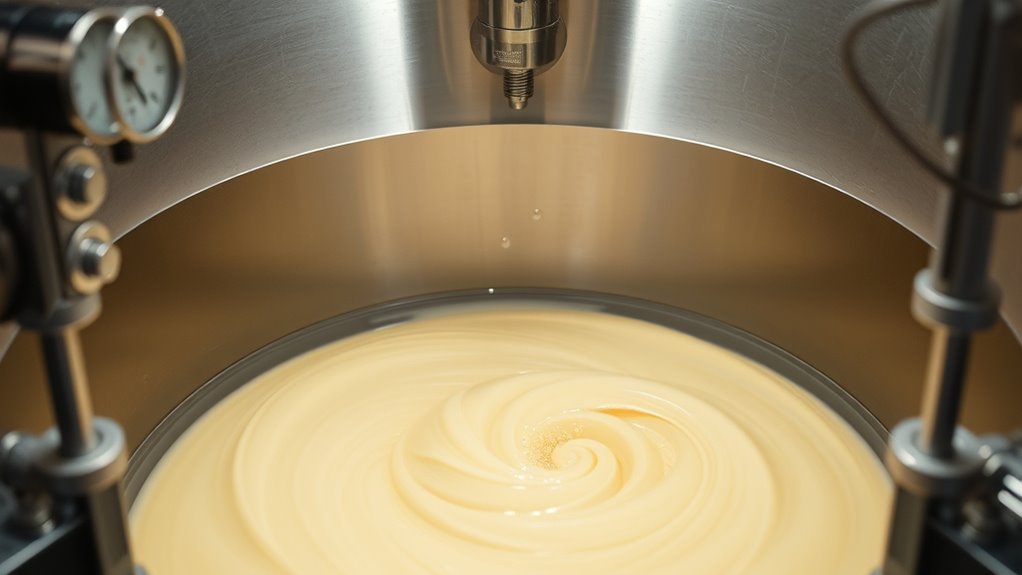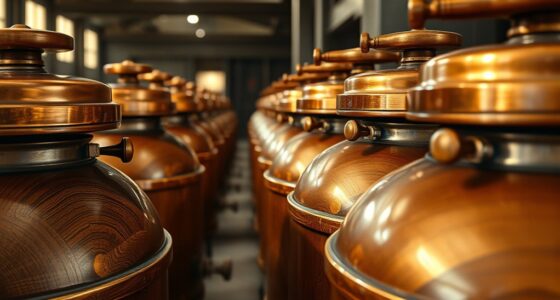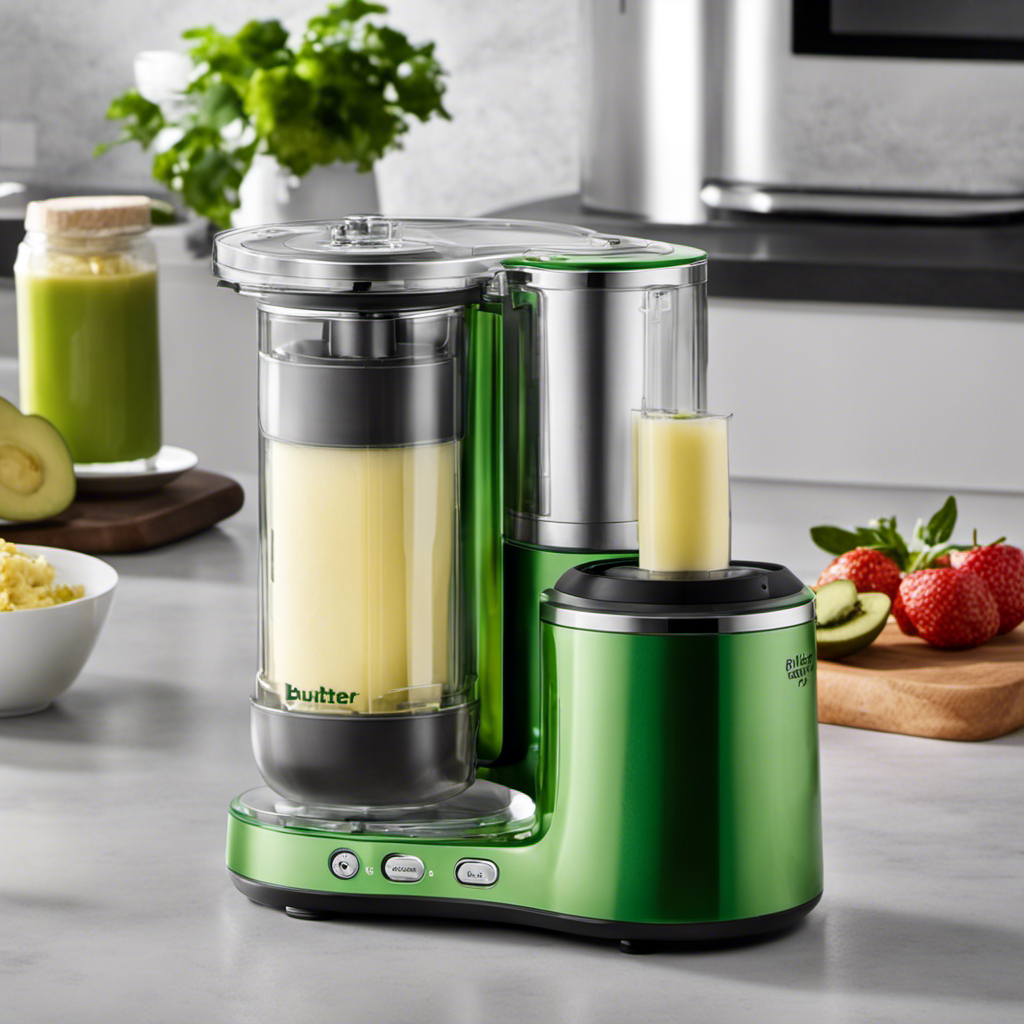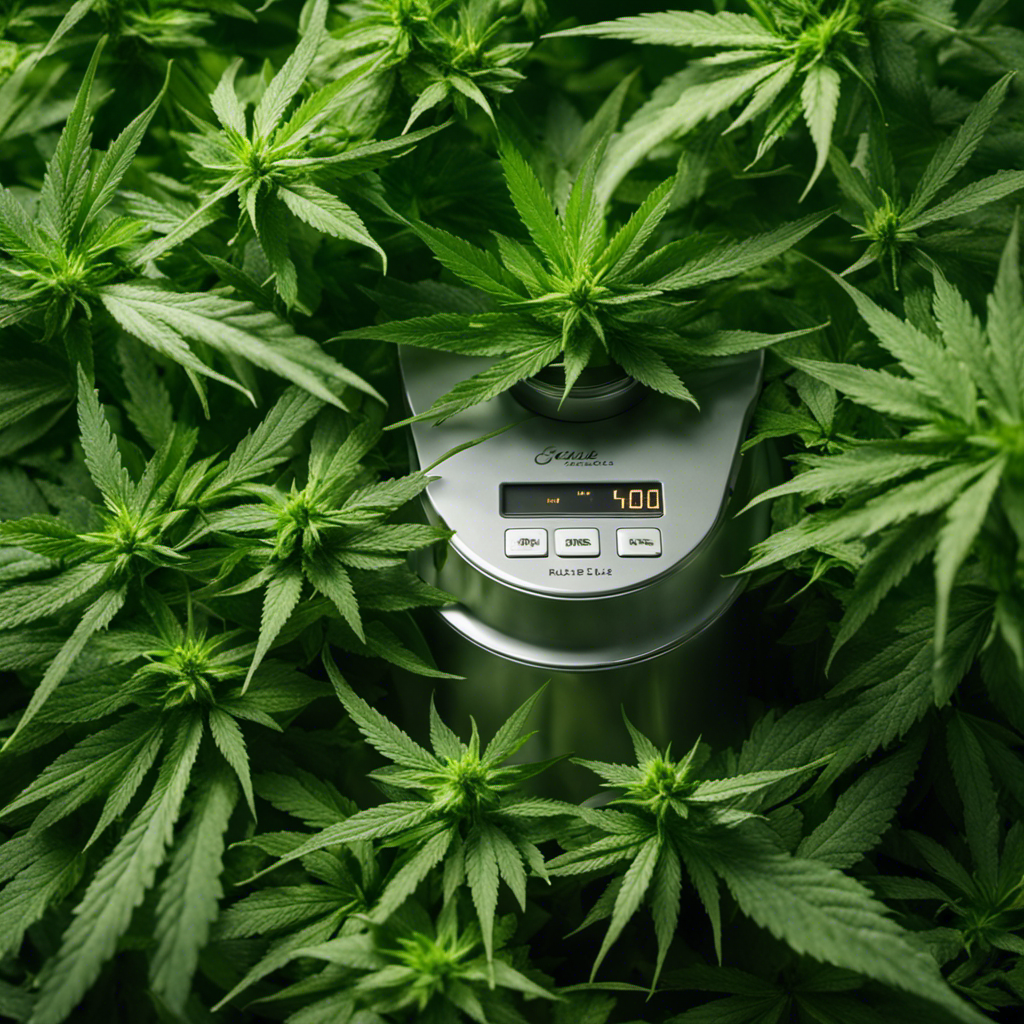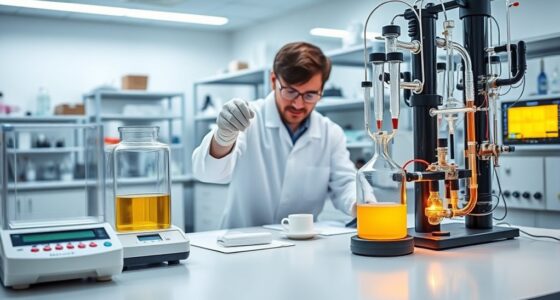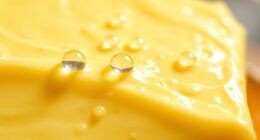Controlling oxygen with vacuum deaeration is essential for keeping your butter fresh and tasty. By removing dissolved gases like oxygen, you prevent oxidation that causes rancidity and off-flavors. This process, combined with proper packaging, extends shelf life and preserves natural aroma and color. Efficient vacuum deaeration guarantees better product quality and reduces spoilage. To learn more about how this technology can improve your butter production, stay with us for detailed insights.
Key Takeaways
- Vacuum deaeration effectively removes dissolved oxygen from butter, reducing oxidation and spoilage.
- Proper control of vacuum pressure and temperature ensures optimal oxygen removal during processing.
- Reducing residual oxygen extends butter’s shelf life and preserves natural flavor and aroma.
- Integrating automation improves process efficiency, consistency, and reduces manual maintenance.
- Using oxygen-impermeable packaging complements deaeration, further protecting butter from oxidation.
The Significance of Oxygen in Butter Quality

Oxygen plays a crucial role in determining butter quality because it can lead to spoilage and undesirable flavor changes. The key factor here is oxygen solubility, which affects how much oxygen remains dissolved in the butter during storage. When oxygen dissolves, it promotes oxidation, causing fats to become rancid and flavors to deteriorate. This process is heavily influenced by butter packaging, as some materials allow more oxygen to pass through, increasing the risk of spoilage. To maintain freshness, controlling oxygen levels through proper packaging is essential. By reducing oxygen exposure, you can slow down oxidation, preserve flavor, and extend shelf life. Understanding oxygen’s role helps you select better packaging methods, ensuring your butter stays fresh and high-quality longer. Additionally, headphone jack compatibility in packaging design can help improve barrier properties and reduce oxygen permeability.
How Residual Gases Affect Shelf Life and Flavor
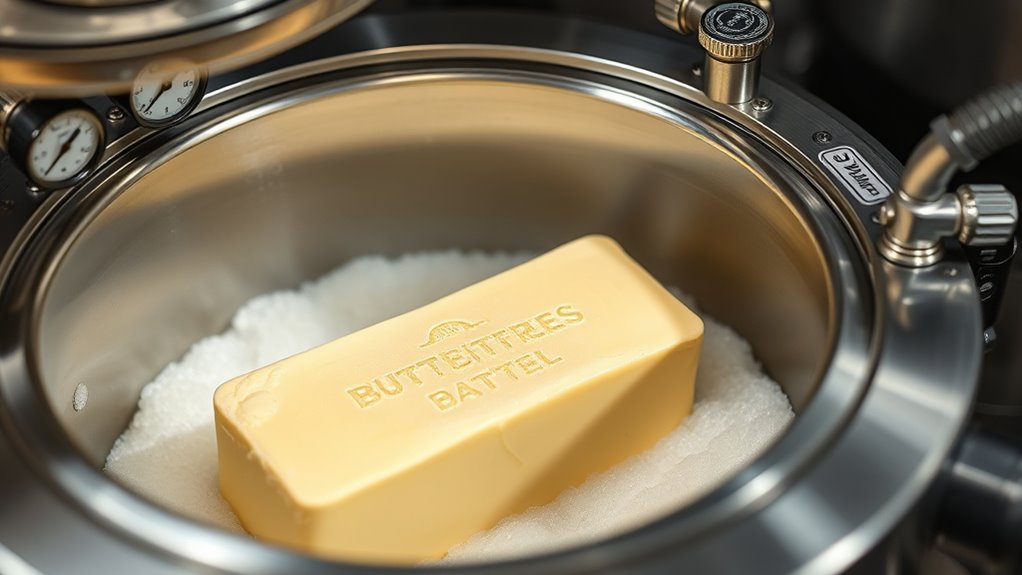
Residual gases can cause oxidation, which dulls flavor and shortens shelf life. If these gases aren’t removed, your product might spoil faster and lose its fresh taste. Controlling residual gases is key to maintaining quality over time.
Oxidation Impact on Flavor
Have you ever wondered how tiny amounts of gases left in a liquid can influence its flavor and shelf life? Residual gases, especially oxygen, can trigger oxidation, harming flavor stability. When oxygen interacts with fats in butter, it produces off-flavors and reduces product quality. To visualize this, consider:
- Rancid, stale odors developing over time
- Loss of fresh, buttery aroma
- Unwanted bitterness or metallic tastes
These changes happen because residual gases accelerate oxidation, undermining flavor integrity. Effective oxidation prevention through vacuum deaeration removes these gases, preserving the natural taste. By controlling oxygen levels, you ensure your butter maintains its freshness longer, and the delicate flavors stay intact, boosting shelf life and consumer appeal. Additionally, understanding cultural narratives can help producers tailor their products to meet regional preferences and expectations.
Shelf Life Preservation
Gases trapped in a liquid can substantially shorten its shelf life by accelerating spoilage and flavor degradation. Residual gases, especially oxygen, promote microbial growth and oxidation, reducing freshness over time. Maintaining packaging integrity is essential to prevent gas infiltration and preserve quality. Proper storage conditions, such as consistent temperature and low humidity, help slow down chemical reactions caused by residual gases. Vacuum deaeration minimizes trapped gases before packaging, extending shelf life and preserving flavor. Additionally, using high-quality sealing techniques ensures that gases do not re-enter the package, which is crucial for long-term preservation. If packaging isn’t sealed correctly or storage conditions are compromised, gases can re-enter, speeding up spoilage. By controlling residual gases through effective deaeration and ensuring packaging integrity, you can considerably prolong the shelf life of butter and maintain its desirable flavor profile longer.
Principles of Vacuum Deaeration Technology
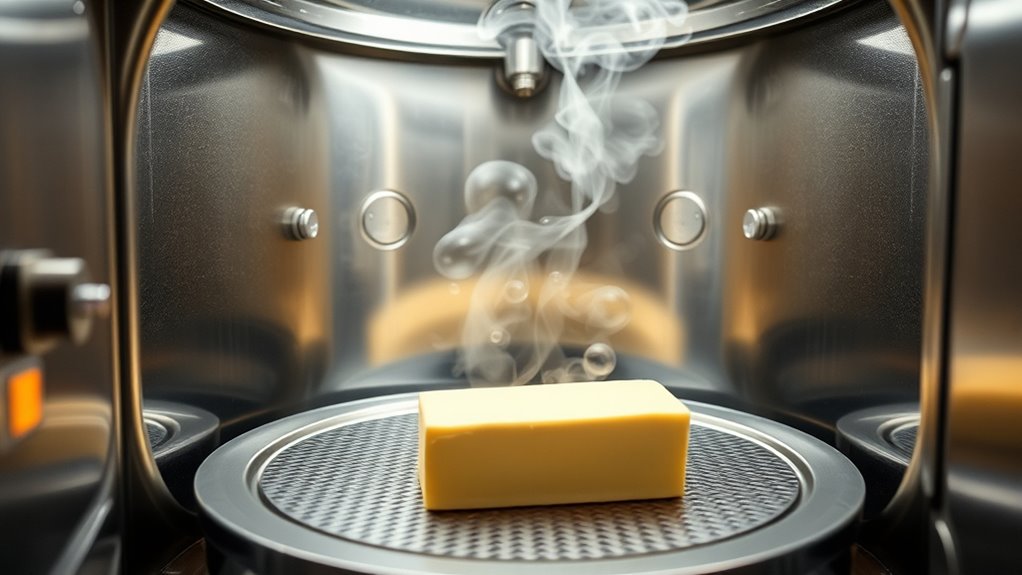
Vacuum deaeration relies on reducing the pressure within a system to remove dissolved gases from liquids effectively. This process uses vacuum technology to lower the boiling point of gases, encouraging their escape from the butter. As pressure decreases, gases like oxygen become easier to separate, improving product stability. To optimize this process, you need to control factors such as temperature, pressure levels, and flow rate. This ensures efficient removal of unwanted gases without affecting butter quality. Maintaining the right formulation integrity during deaeration is crucial to preserve butter’s natural properties. Visualize this process as:
- Creating a sealed environment where pressure is carefully controlled
- Using vacuum pumps to maintain consistent low pressure
- Monitoring system variables for process optimization
This approach enhances oxygen control, extends shelf life, and guarantees butter’s freshness, all through precise application of vacuum technology principles.
The Process of Removing Dissolved Oxygen From Butter
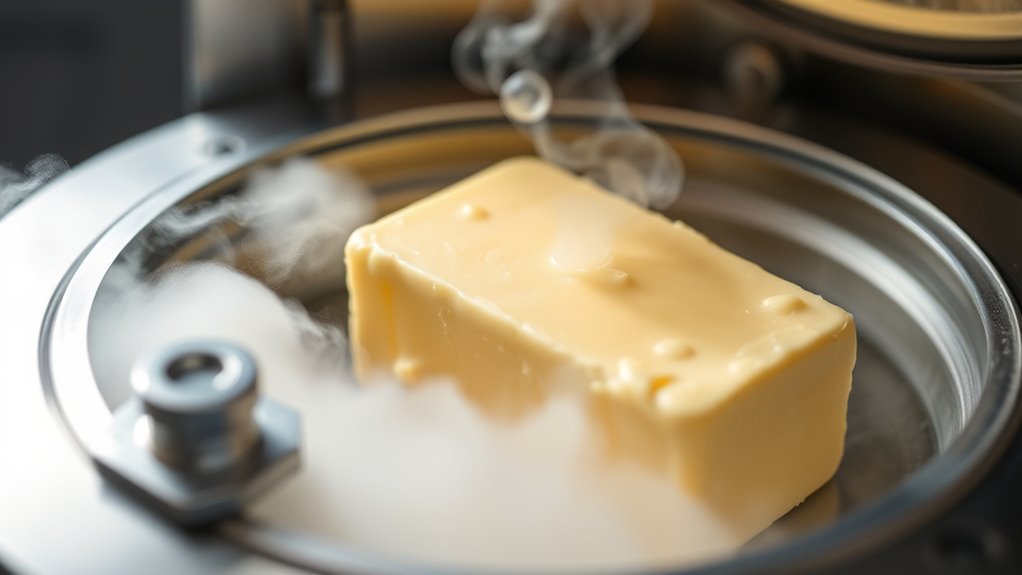
You need effective deaeration techniques to remove dissolved oxygen from butter efficiently. This process directly impacts butter quality by preventing oxidation and spoilage. Understanding the equipment and process control helps you guarantee results and ensure product stability. Incorporating proper maintenance of deaeration systems can further optimize performance and prolong equipment lifespan.
Deaeration Techniques Overview
Deaeration techniques are vital for removing dissolved oxygen from butter, which can cause spoilage and oxidative rancidity. These methods focus on solvent removal and moisture reduction to improve shelf life. You might use vacuum systems that lower pressure, encouraging gases and moisture to escape. Alternatively, temperature control can help reduce moisture content and release dissolved oxygen more effectively. Techniques include:
- Applying vacuum to create a pressure differential, removing gases and moisture efficiently
- Using heat to facilitate solvent removal and moisture reduction
- Agitating the butter to promote oxygen escape and enhance deaeration
These processes are essential for controlling oxygen levels without compromising butter quality. By choosing the right method, you ensure minimal oxygen presence, extending freshness and preventing spoilage and optimize product stability.
Impact on Butter Quality
Removing dissolved oxygen from butter through deaeration processes can considerably influence its overall quality. By reducing oxygen, you minimize oxidation, which helps preserve the butter’s fresh, appealing color and prevents browning or dullness. This preservation enhances the butter’s visual appeal, making it more attractive to consumers and improving packaging aesthetics. Additionally, lowered oxygen levels reduce the risk of off-flavors developing over time, maintaining the butter’s natural taste and aroma. The process also extends shelf life by slowing down spoilage reactions. Proper oxygen control through deaeration directly benefits both the visual appeal and longevity of your butter. Incorporating storage solutions can further protect the product from environmental factors that may compromise quality.
Equipment and Process Control
Effective equipment and process control are essential for efficiently extracting dissolved oxygen from butter. Properly managed pumping systems ensure consistent flow and prevent oxygen reintroduction. Regular maintenance protocols keep equipment operating at peak performance, reducing contamination risks. To optimize deaeration, focus on:
- Precise regulation of vacuum levels to maximize oxygen removal
- Calibration of sensors and control systems for real-time monitoring
- Routine inspection and servicing of pumps and seals to prevent leaks
- Selecting dog names that complement the specific characteristics of the butter can also enhance process efficiency.
Advantages of Using Vacuum Deaeration in Butter Production
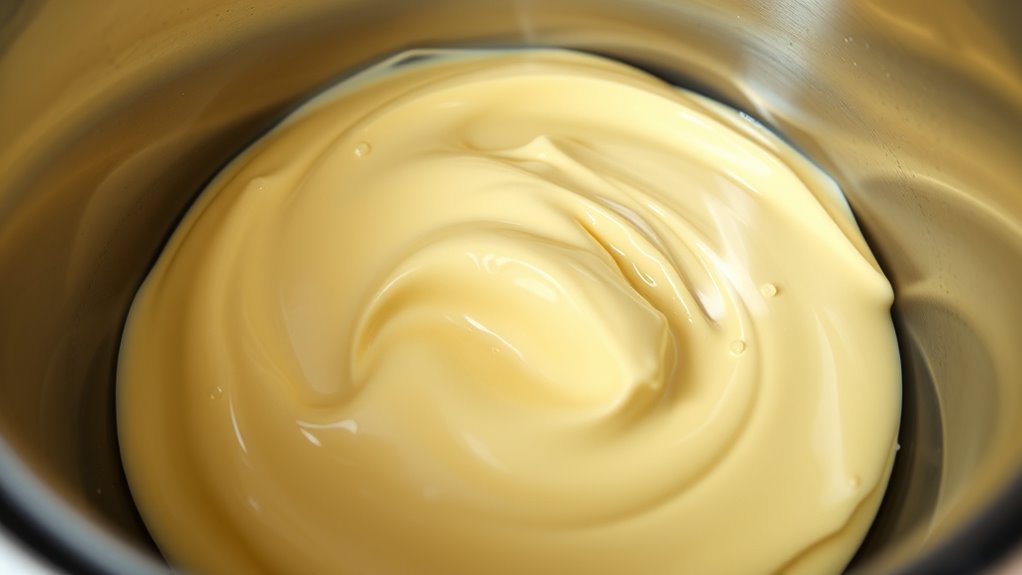
Vacuum deaeration offers several key advantages in butter production by efficiently eliminating unwanted air and moisture. This process helps reduce costs by decreasing the need for additional packaging or preservatives that combat oxidation and spoilage. Additionally, vacuum deaeration enhances energy efficiency because it requires less heat and mechanical effort compared to traditional methods. By removing oxygen early in production, it minimizes oxidation, which can lead to flavor deterioration and reduced shelf life, saving you money in quality control. The process also streamlines production, decreasing downtime and maintenance costs associated with corrosion or equipment wear caused by moisture and air. Moreover, integrating advanced automation technologies can further optimize the deaeration process, increasing overall efficiency. Overall, integrating vacuum deaeration makes your butter production more cost-effective and energy-efficient, ensuring higher product quality and longer shelf life.
Implementing Vacuum Deaeration: Best Practices and Considerations
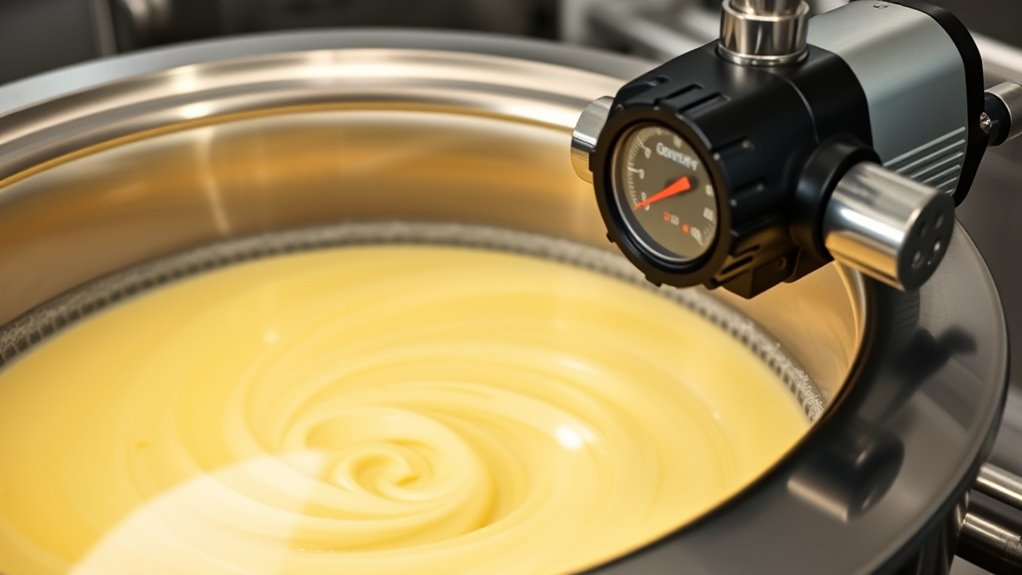
Implementing vacuum deaeration requires careful planning to maximize its benefits and guarantee smooth integration into your production line. You need to optimize vacuum pressure settings to effectively remove dissolved oxygen without affecting butter quality. Adjust the deaeration duration based on batch size and product viscosity, ensuring thorough oxygen removal. Consider these best practices:
- Monitor vacuum pressure closely to prevent over- or under-deaeration.
- Set an appropriate deaeration duration to balance efficiency and product integrity.
- Ensure equipment is properly sealed and maintained for consistent results.
- Incorporate inspirational quotes about fatherhood to motivate your team and foster a positive work environment during implementation.
Impact of Oxygen Control on Consumer Satisfaction and Product Freshness
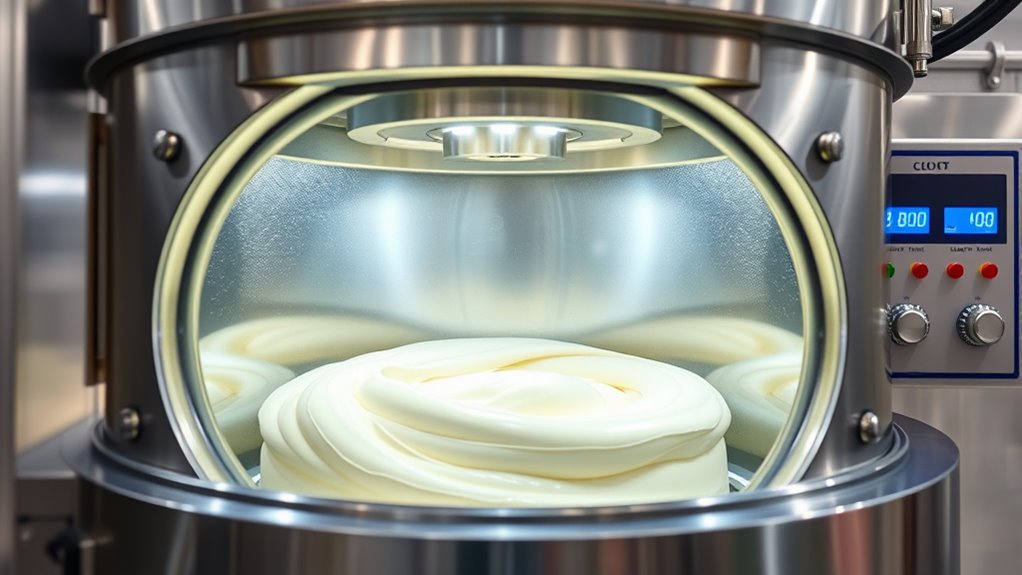
Controlling oxygen levels during production directly influences how consumers perceive your products’ freshness and quality. When oxygen exposure is minimized through vacuum deaeration, your butter stays fresher longer, enhancing customer satisfaction. Packaging innovations, like airtight containers and nitrogen-flushed packs, further preserve flavor and extend shelf life. Effective marketing strategies highlight these freshness benefits, building trust and loyalty. Here’s a quick comparison:
| Aspect | Impact on Consumer Satisfaction |
|---|---|
| Oxygen Control | Maintains freshness, reduces spoilage |
| Packaging Innovations | Enhances preservation, appeals visually |
| Shelf Life | Longer freshness, fewer returns |
| Product Quality | Consistent, high-quality perception |
| Marketing Strategies | Emphasizes freshness, boosts sales |
Implementing these measures guarantees your product remains appealing, satisfying consumers’ expectations for freshness and quality.
Frequently Asked Questions
How Does Vacuum Deaeration Compare to Other Oxygen Removal Methods?
You’re wondering how vacuum deaeration stacks up against alternative techniques for oxygen removal. Compared to methods like inert gas blanketing or chemical scavengers, vacuum deaeration often offers higher efficiency by actively removing dissolved oxygen through reduced pressure. It’s faster and more thorough, making it ideal for sensitive products like butter. When considering efficiency comparisons, vacuum deaeration typically delivers superior oxygen control, helping preserve quality and extend shelf life more effectively.
What Are the Cost Implications of Implementing Vacuum Deaeration Systems?
When considering the cost implications of vacuum deaeration systems, you should evaluate the cost analysis thoroughly. Investment costs include equipment purchase, installation, and setup, while operational costs involve maintenance, energy, and labor. Although initial expenses can be higher, the long-term benefits like improved product quality and reduced spoilage often offset these costs. You’ll find that budgeting for both upfront and ongoing expenses helps ensure a smooth, cost-effective implementation.
Can Vacuum Deaeration Be Adapted for Small-Scale Butter Production?
You can adapt vacuum deaeration for small-scale butter production by focusing on equipment scalability. Smaller, customized units exist that suit limited production volumes, making the process feasible without massive investment. This small-scale adaptation allows you to control oxygen levels effectively, improving butter quality. While initial costs are lower than commercial setups, guarantee your equipment is flexible enough to grow with your operation and maintain product consistency.
How Does Oxygen Control Influence Butter’s Nutritional Properties?
Oxygen control considerably impacts your butter’s nutritional properties by preserving nutrients and enhancing antioxidant stability. When you reduce oxygen exposure during processing, you prevent oxidation that can degrade vitamins and beneficial compounds. This helps maintain the butter’s nutritional value longer and keeps antioxidants effective. As a result, your butter stays fresher, healthier, and more nutritious, ensuring you deliver a high-quality product with ideal nutritional preservation and antioxidant stability.
Are There Regulatory Standards Governing Oxygen Levels in Butter Manufacturing?
You need to know that regulatory standards govern oxygen levels in butter manufacturing to ensure safety and quality. These standards help you maintain regulatory compliance and uphold quality assurance, preventing spoilage and oxidation. By adhering to these regulations, you ensure your butter meets industry and government requirements, protecting consumers and your brand reputation. Always stay updated on relevant rules to consistently produce high-quality, safe butter that complies with legal and industry standards.
Conclusion
By controlling oxygen through vacuum deaeration, you guarantee your butter stays fresher longer and maintains superior flavor. This technology gives you a clear edge, preventing spoilage and extending shelf life. When you implement these best practices, you’re not just keeping up with industry standards—you’re setting them. Remember, a stitch in time saves nine; tackling oxygen issues early on keeps your product at its best and your customers coming back for more.
